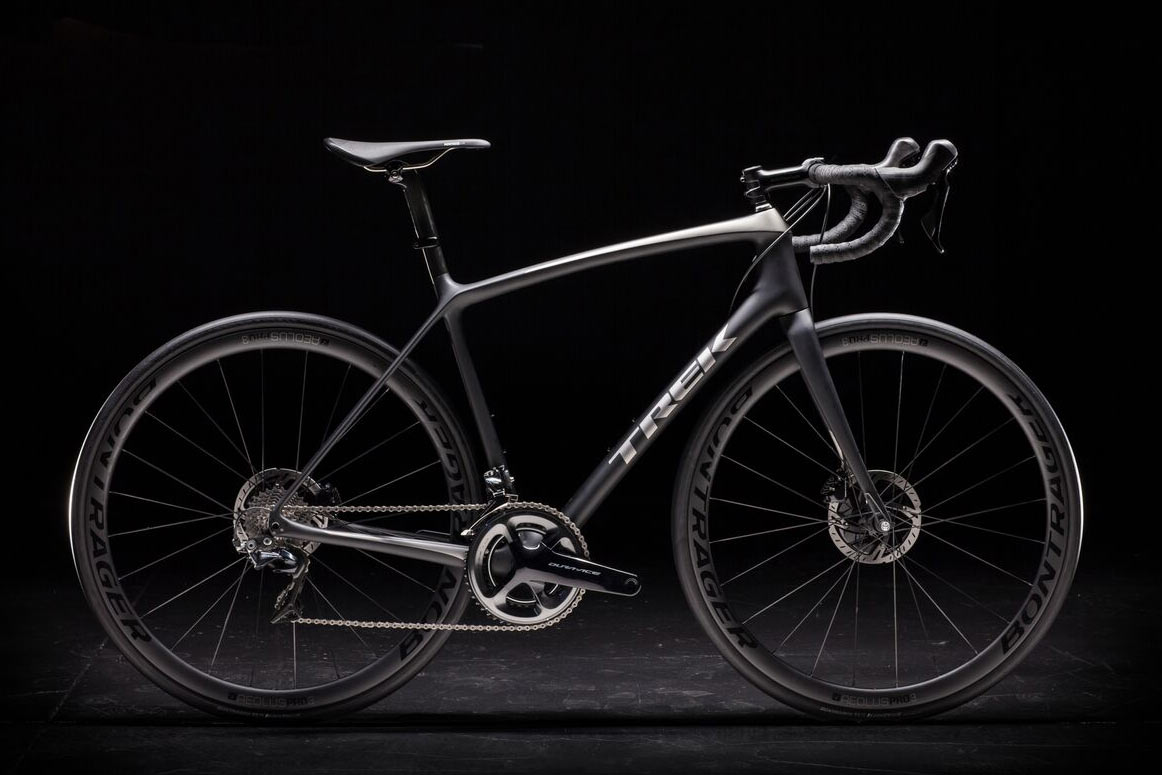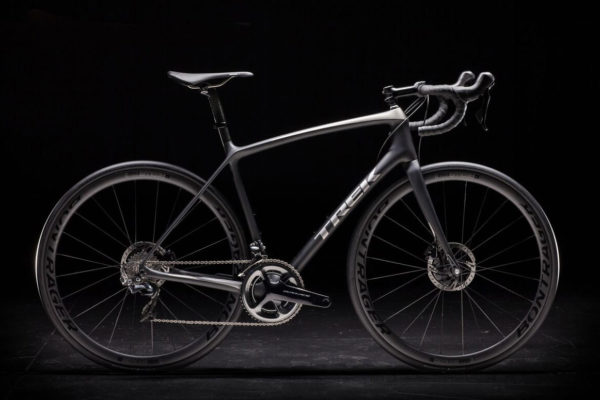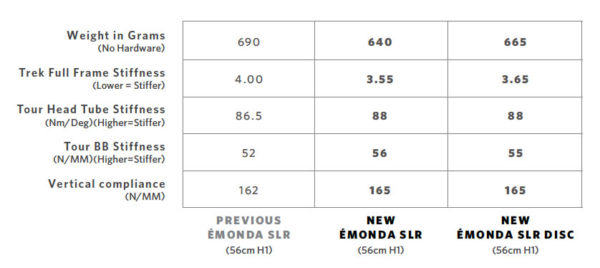Just in time for Le Tour, the all-new Trek Emonda pushes the boundaries of lightweight ever further with an updated rim brake version. And for rides with inclement weather, speedy descents and rougher roads, there’s a new Emonda Disc version that opens up tire clearance and still comes in very light.
In development for some time, Trek developed a new 700-series OCLV carbon fiber to shave grams and increase stiffness on what’s already claiming to be the world’s lightest production road bike. Then they took more extreme measures to refine the layup, testing and re-testing via FEA in the lab before putting multiple prototypes under their pro riders, including Alberto Contador. The result is a bike they’ll put up against any other race bike out there, offering a pro caliber ride and performance while being light as sin…
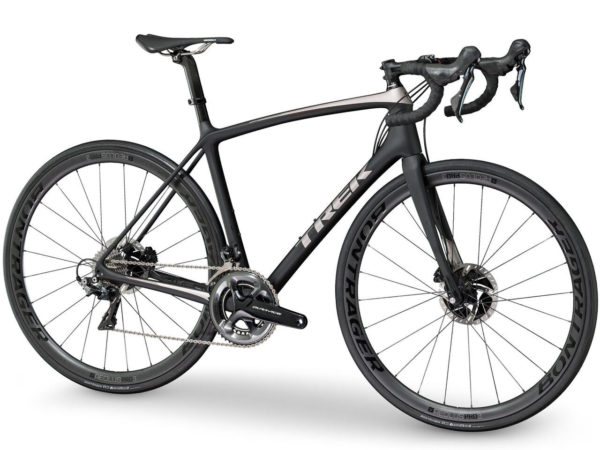
The disc brake Emonda gets 28mm tire clearance – not quite gravel widths, though they say the bike is more than ready for a little dirt and cobble. It uses flat mount brake mounts and 12mm thru axles front and rear. Other details are shared with the rim brake models: Ride tuned seatmast, BB90, carbon rock strike guard, carbon dropouts, and H2 fit geometry. (Trek offers H1 and H2 fits, which are different geometry options to suit more or less aggressive riding positions). There’s also a women’s specific model.
The SLR frames upgrade a bit with carbon front derailleur mount, H1 and H2 fits, and Project One customization options.
Like the original, there are various levels of carbon and construction used. The SLR tier gets the lightest layups, and this chart shows how much lighter the 2018 models are than prior gen. What’s most surprising is that even the disc brake frame is lighter than the prior Emonda SLR. Trek offers their Vaporcoat paint, which adds little more than a boundary layer of UV protection, to keep finished (aka ridable) weights as low as possible. The SLR forks have a claimed weight of 313g (rim) and 350g (disc).
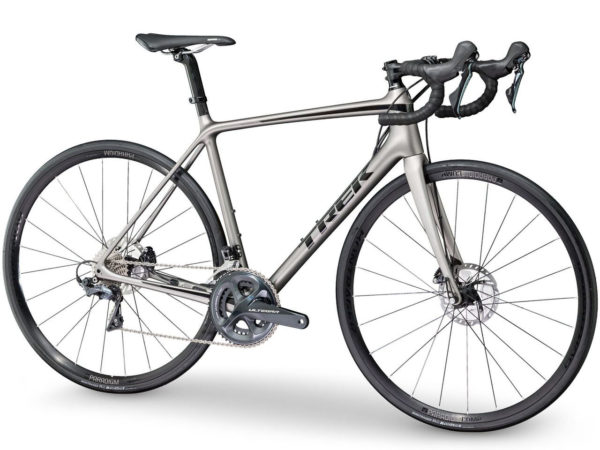
The SL bikes use 500-series OCLV and have claimed frame weights of 1091g (rim) and 1149g (disc), with fork weights matching the SLR models. There’s also an SL5 fork for the lowest tier complete bikes that comes in at 436g.
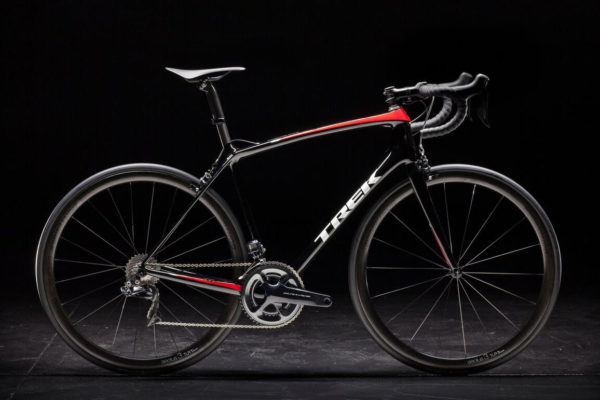
The Emonda rim brake use direct-mount calipers. Complete bikes start at just $1,899 for the SL5 with Shimano 105, which is more than $400 less than last year’s entry level, making their lightweight bikes more affordable than ever, too. At the top of the range is the SLR 9 for $10,999 with Dura-Ace Di2 (shown above).
Shared features include a new DuoTrap S speed and cadence sensor that shares the same integrated (and virtually hidden) part inside the chainstay, but gets both Bluetooth 4.0 and ANT+ compatibility. And the front end of the bikes uses their Blendr computer mount (for Bontrager and Garmin units) integration. Combine that with internal cable, hose and wire routing and you’ve got one very clean looking bike. And all of them come with a lifetime warranty.
Above is the video rundown from Trek, and below is a brief moving picture about Contador’s bike:
For full build specs, pricing and options on all models, hit their website.
